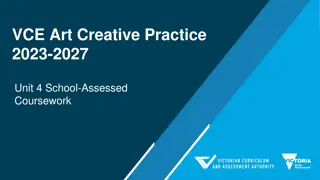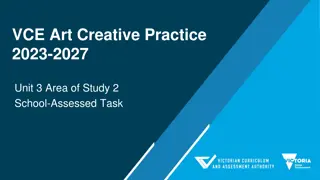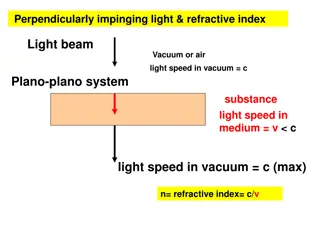
Intraocular Lenses
Despite challenges like high costs and potential complications, ongoing R&D in the intraocular lens market aims to enhance patient outcomes and expand product offerings.n
Download Presentation

Please find below an Image/Link to download the presentation.
The content on the website is provided AS IS for your information and personal use only. It may not be sold, licensed, or shared on other websites without obtaining consent from the author. Download presentation by click this link. If you encounter any issues during the download, it is possible that the publisher has removed the file from their server.
E N D
Presentation Transcript
Vision Revolution: The Future of Intraocular Lenses in Ophthalmic Surgery
Intraocular Lens Market 2024-2031 The Intraocular Lens Market is set for considerable growth, propelled by an array of demographic and technological trends, as detailed in a recent report by Meticulous Research . This research indicates that the market is projected to reach approximately $7.17 billion by 2031, growing at a compound annual growth rate (CAGR) of 6.5% from 2024 to 2031. This surge is primarily driven by factors such as an aging population, an increasing prevalence of cataracts, and the rising demand for advanced surgical solutions. Cataracts, which are characterized by the clouding of the eye's natural lens, have become a significant public health concern, accounting for a considerable percentage of global blindness. The need for effective treatment options is more pressing than ever, particularly given the estimated doubling of the global population aged 65 and older by 2050. Download Sample Report Here @ https://www.meticulousresearch.com/download-sample- report/cp_id=5915 As the geriatric population grows, so does the incidence of cataracts, prompting a surge in the number of cataract surgeries performed annually. With over 20 million people in the United States alone living with cataracts, the demand for intraocular lenses is expected to escalate sharply. These lenses are surgically implanted to replace the natural lens during cataract surgery, and the choice of lens type can significantly impact a patient s quality of life post-surgery. Multifocal and accommodating lenses, which provide a broader range of vision without the need for glasses, are increasingly popular among patients, as they minimize the reliance on corrective eyewear. This shift in patient preferences underscores the importance of technological advancements in lens design and material. Technological innovations have transformed the landscape of cataract surgery and IOL implantation. The development of advanced materials, such as hydrophobic acrylic and silicone, has improved the optical quality and durability of IOLs, enhancing visual outcomes for patients. These materials reduce the risk of complications, such as glare and halos, which can occur with traditional lens types. Furthermore, the introduction of femtosecond laser-assisted cataract surgery has revolutionized the surgical process, making it safer and more efficient. This minimally invasive approach allows for greater precision in lens implantation, resulting in improved patient satisfaction and quicker recovery times. Awareness of eye health is also rising, largely due to public health initiatives aimed at educating individuals about the importance of regular eye examinations. Many organizations are advocating for early detection and treatment of eye disorders, particularly in older adults. Increased awareness is driving more individuals to seek out ophthalmic care, leading to a greater demand for cataract surgeries and intraocular lenses. Patients are becoming more proactive about their eye health, recognizing that timely intervention can prevent severe vision impairment or blindness. Geographically, the intraocular lens market exhibits diverse growth patterns. North America holds a significant share of the market, primarily due to its advanced healthcare infrastructure, high levels of awareness, and the availability of skilled ophthalmologists. The United States leads in the adoption of innovative cataract surgical techniques, positioning it as a key player in the global IOL market. However, the Asia-Pacific region is anticipated to experience the highest growth rate in the coming years. Rapid urbanization, increasing healthcare expenditure, and a growing awareness of eye care services in countries like India and China are significant contributors to this growth. The increase in disposable income among these populations enables more individuals to seek elective surgical procedures, further driving demand for intraocular lenses. Page 1 of 3 Meticulous Research| sales@meticulousresearch.com
Intraocular Lens Market 2024-2031 Despite the optimistic outlook for the intraocular lens market, several challenges remain. One of the most pressing concerns is the potential for complications associated with IOLs, such as posterior capsule opacification (PCO) and lens dislocation. Although these complications are generally rare, they can significantly impact patient satisfaction and may necessitate additional surgical interventions. Educating patients about these risks is crucial, as is ensuring that they are informed about the expertise of their surgical teams. Selecting experienced surgeons can help minimize complications and improve overall outcomes. Additionally, the high cost of advanced intraocular lenses can create barriers to access, particularly in low- and middle-income countries. Many patients face financial constraints that can limit their ability to afford necessary surgeries and IOLs. Inadequate reimbursement policies in some regions further complicate access to care, making it essential for stakeholders to advocate for more inclusive healthcare policies that ensure equitable access to eye care services. Addressing these financial barriers is critical to increasing the number of patients who can benefit from life-changing cataract surgeries. Browse in depth : https://www.meticulousresearch.com/product/intraocular-lens-market-5915 Research and development efforts continue to advance the intraocular lens market, focusing on creating next-generation lenses that improve both performance and safety. Manufacturers are increasingly investing in innovative designs and materials that enhance the functionality of IOLs. For instance, the introduction of toric lenses, specifically designed to correct astigmatism, has provided patients with tailored visual solutions that were previously unavailable. This level of customization is becoming increasingly important as patient expectations rise and the demand for personalized medical solutions grows. Furthermore, ongoing studies are exploring the long-term effects of various intraocular lens types on patient outcomes. Understanding how different lens designs impact vision quality, patient satisfaction, and overall health is essential for developing more effective products. Collaboration between manufacturers, healthcare providers, and researchers will play a pivotal role in advancing the science of intraocular lenses and optimizing surgical techniques. In summary, the intraocular lens market is on a growth trajectory fueled by the increasing prevalence of cataracts, technological advancements, and a heightened focus on eye health. As the global population ages and demand for cataract surgeries escalates, stakeholders must address challenges related to access and affordability while continuing to innovate and enhance patient outcomes. By focusing on these key areas, the intraocular lens market can significantly improve vision health worldwide, ultimately leading to a better quality of life for millions of individuals affected by cataracts and other vision impairments. Key Players The key players profiled in the intraocular lens market report are Alcon, Inc. (U.S.), Johnson & Johnson Services, Inc. (U.S.), Carl Zeiss Meditec AG (Germany), Hoya Corporation (Japan), Beaver- Visitec International (U.S.), Ophtec B.V. (Netherlands), Appasamy Associates Private Limited (India), Atia Vision, Inc. (U.S.), LENSTEC, Inc. (U.S.), Santen Pharmaceutical Co., Ltd. (Japan), Rayner Group (U.K.), EyeKon Medical, Inc. (U.S.), and Humanoptics Holding AG (Germany). Buy Now : https://www.meticulousresearch.com/Checkout/90991723 Page 2 of 3 Meticulous Research| sales@meticulousresearch.com
Intraocular Lens Market 2024-2031 Key questions answered in the report- Which are the high-growth market segments in terms of intraocular lens by type, material, application, end user, and geography? What was the historical market for intraocular lenses across the globe? What are the market forecasts and estimates for the period 2024 2031? What are the major drivers, restraints, opportunities, and challenges in the intraocular lens market? Who are the major players operating in the intraocular lens market? What is the competitive landscape like, and who are the leaders in the intraocular lens market? What are the recent developments in the intraocular lens market? What are the different strategies adopted by the major players in the intraocular lens market? What are the geographical trends and high-growth regions/countries? Contact Us: Meticulous Research Email- sales@meticulousresearch.com Contact Sales- +1-646-781-8004 Connect with us on LinkedIn- https://www.linkedin.com/company/meticulous-research Page 3 of 3 Meticulous Research| sales@meticulousresearch.com






















